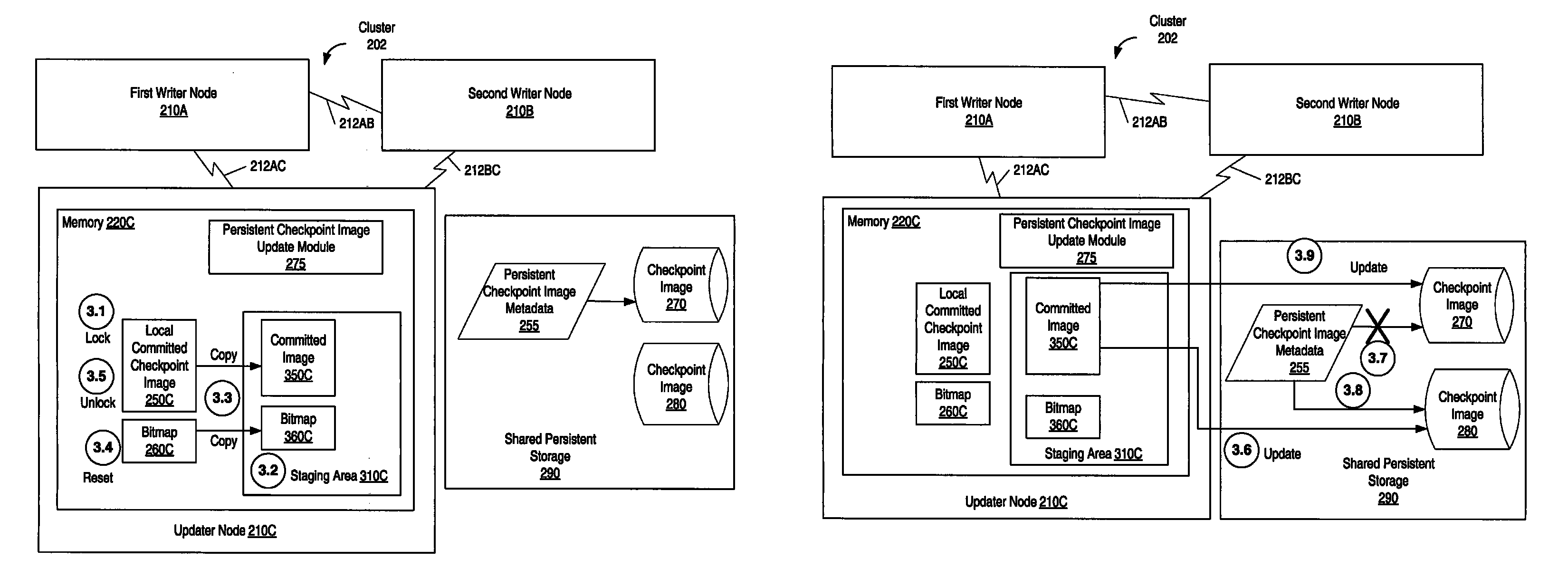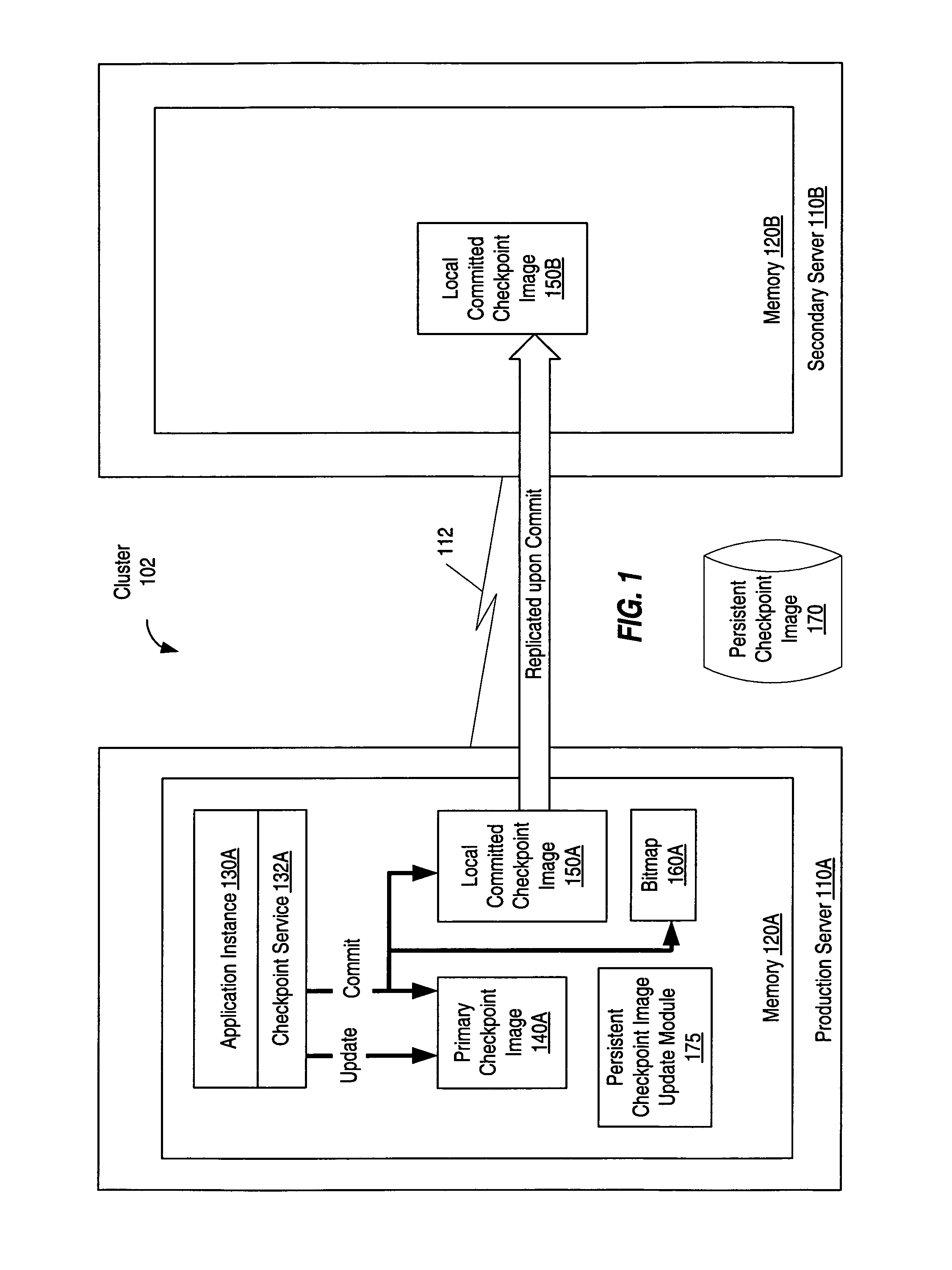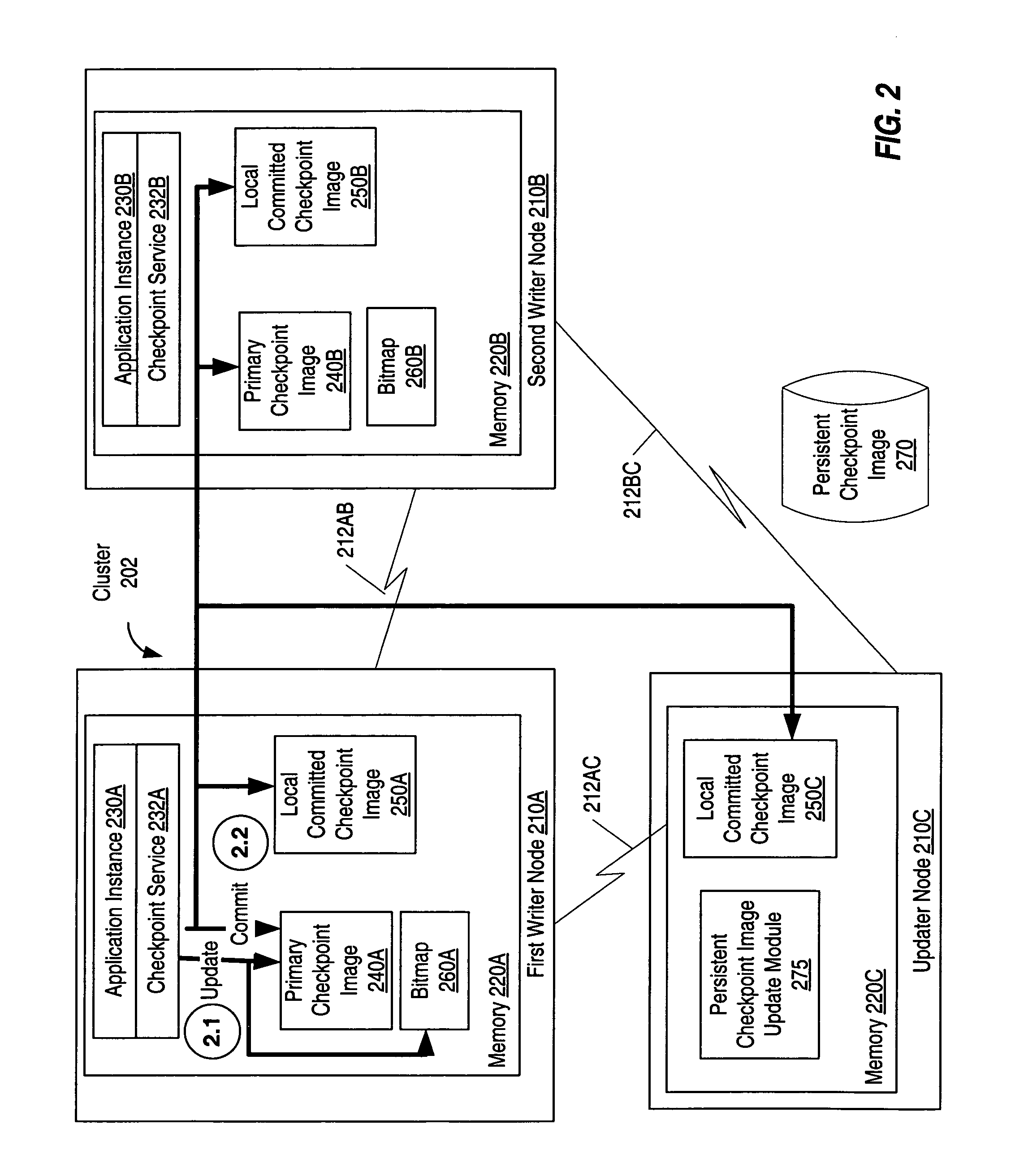Persistent images of distributed shared memory segments and in-memory checkpoints
a shared memory and persistent image technology, applied in the field of persistent images of distributed shared memory segments and in-memory checkpoints, can solve the problems of software replication suffering from its own problems, tmr cannot detect and recover from a software module failure, and the need for complex software protocols, so as to facilitate recovery
- Summary
- Abstract
- Description
- Claims
- Application Information
AI Technical Summary
Benefits of technology
Problems solved by technology
Method used
Image
Examples
Embodiment Construction
[0019]For a thorough understanding of the subject invention, refer to the following Detailed Description, including the appended Claims, in connection with the above-described Drawings. Although the present invention is described in connection with several embodiments, the invention is not intended to be limited to the specific forms set forth herein. On the contrary, it is intended to cover such alternatives, modifications, and equivalents as can be reasonably included within the scope of the invention as defined by the appended Claims.
[0020]In the following description, for purposes of explanation, numerous specific details are set forth in order to provide a thorough understanding of the invention. It will be apparent, however, to one skilled in the art that the invention can be practiced without these specific details.
[0021]References in the specification to “one embodiment” or “an embodiment” means that a particular feature, structure, or characteristic described in connection ...
PUM
 Login to View More
Login to View More Abstract
Description
Claims
Application Information
 Login to View More
Login to View More - R&D
- Intellectual Property
- Life Sciences
- Materials
- Tech Scout
- Unparalleled Data Quality
- Higher Quality Content
- 60% Fewer Hallucinations
Browse by: Latest US Patents, China's latest patents, Technical Efficacy Thesaurus, Application Domain, Technology Topic, Popular Technical Reports.
© 2025 PatSnap. All rights reserved.Legal|Privacy policy|Modern Slavery Act Transparency Statement|Sitemap|About US| Contact US: help@patsnap.com



